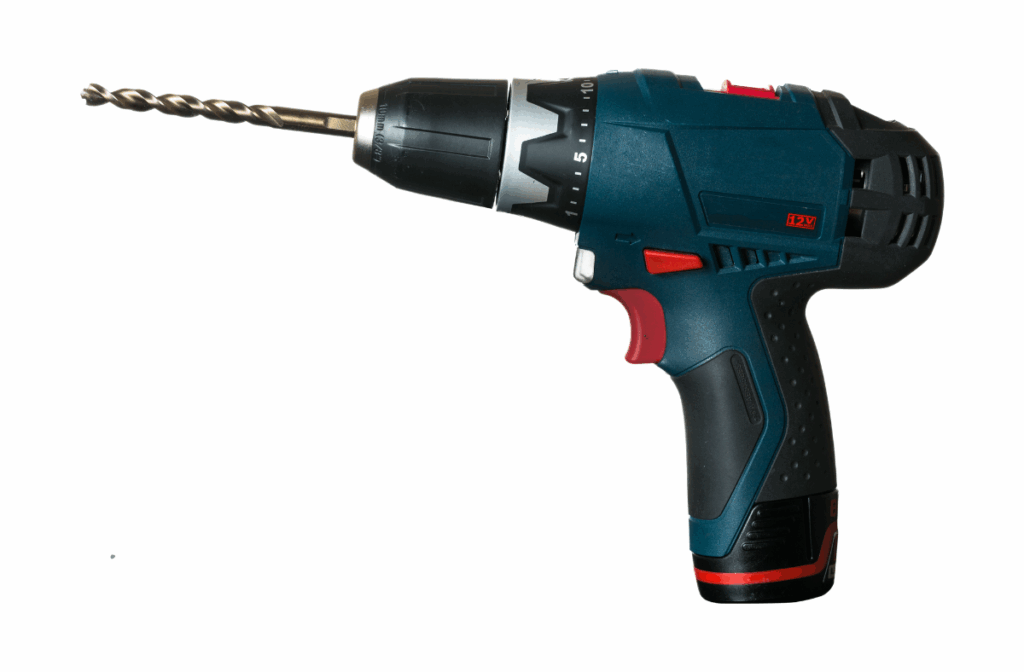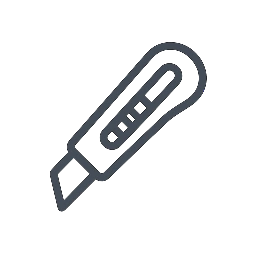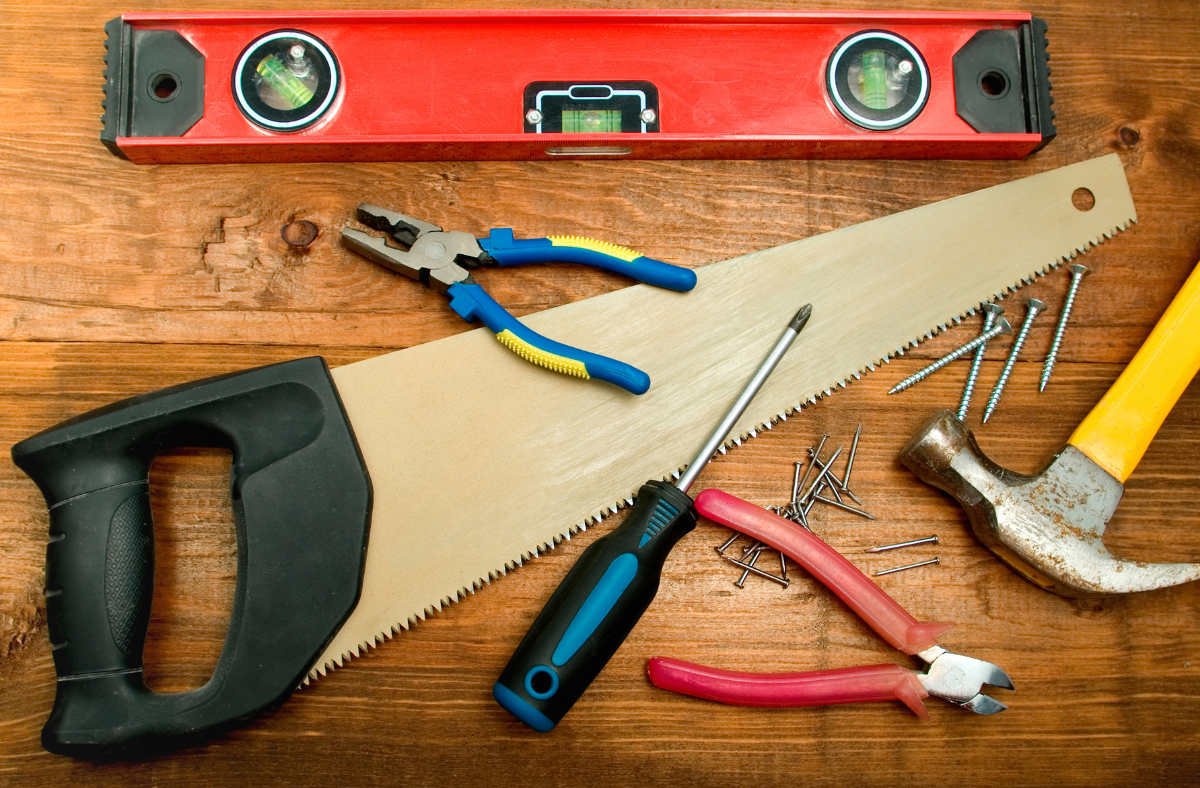So, you’re ready to dive into the world of DIY! You’ve pinned inspiring projects, saved gorgeous room makeovers, and maybe even bought the paint. But before you tackle that bookshelf build or tile that backsplash, there’s one crucial, often overlooked, step: assembling your tools for DIY. Without the right tools to do the job, a DIY project can turn into a DIY disaster.
Why It’s So Important to have the Right Tools for DIY
Beginners often wonder, “Can’t I just make do with what I have?” While ingenuity has its place, I have learnt through experience (and many mistakes), that using the proper tools for DIY makes a massive difference:
Safety First: The wrong tool (like using a butter knife as a screwdriver!) is a recipe for slips, strains, or worse. Proper tools are designed for control and safety.
Precision & Quality: A sharp utility knife gives clean cuts. A spirit level ensures your shelves aren’t crooked. The right tool helps you achieve professional-looking results, even as a newbie.
Saves Time & Frustration: Struggling with a badly fitting drill bit or a blunt saw eats up time and saps your enthusiasm. The correct tool makes the job smoother and faster.
Prevents Damage: Using a screwdriver that doesn’t fit can strip screw heads. Hammering nails without the right force can damage wood. Good tools protect your materials and your project.
Builds Confidence: When you have the right tool in hand and it works as it should, you feel capable and empowered to tackle more.
Building Your Starter Toolkit Without Breaking the Bank
The beauty of starting your DIY journey is that you don’t need a pro-level workshop overnight. Focus on versatile, multi-tasking tools for DIY that cover the fundamentals. Here’s how to build smart on a budget:
Start Core, Not Comprehensive: Identify the types of projects you want to try first (e.g., simple furniture assembly, painting, basic repairs). Buy tools specifically for those.
Embrace Second-Hand Savvy: Online marketplaces such as Facebook Marketplace, Gumtree and ebay are goldmines for quality used tools. Inspect them carefully for damage.
Borrow Before You Buy: Need a specialty tool for a one-off project? Ask a handy friend, family member.
Store Brands & Sales: Some stores often have very capable own brands like Argos and Lidl that offer excellent value. Watch out for sales!
Focus on Durability (Within Reason): For tools you’ll use frequently (like a hammer or screwdriver set), spending a little more upfront for decent quality often saves money long-term versus replacing broken cheap tools.
The Must-Have Starter Tools for DIY (The Budget-Friendly Core)
Here’s your essential beginner’s toolkit – focus on acquiring these versatile workhorses first:
Claw Hammer: Your go to for driving nails, light demolition, and gentle persuasion. A classic, indispensable tool. (Budget Tip: A basic smooth-faced claw hammer is perfect for starters.)
Screwdriver Set: Don’t rely on one multi-bit screw driver alone. A small set with comfortable handles (often 4-6 pieces covering common sizes) is crucial. Magnetic tips are a bonus!
Adjustable Wrench (6-8 inches): A lifesaver for nuts and bolts of various sizes. Much cheaper than buying a full socket set immediately.
Tape Measure (meters / 26ft): Accurate measuring is non-negotiable in DIY. Look for one with a sturdy locking mechanism and clear markings.
Stanley Knife & Extra Blades: Stanley knives are an essential piece of any tool kit, having many uses, from opening packages to trimming carpet, and more. Retractable blades are safest.
Spirit Level: Crucial for hanging pictures, shelves, curtain rods, wall panels. A basic bubble level is fine. Additionally a smaller spirit level (6-9 inches) is also handy to have.
Pliers Set (Needle-Nose & Slip-Joint): Gripping, bending, twisting wires, pulling nails. Needle-nose offer precision in tight spots; slip-joint (aka combination pliers) handle a wider range of tasks.
Safety Glasses & Work Gloves: Non-negotiable protection. Glasses shield your eyes from dust and debris; gloves protect your hands from splinters, sharp edges, and blisters.
Set Square: This little triangle isn’t just for joiners! It’s fantastic for marking 90° and 45° angles, checking squareness, and as a small saw guide. Highly versatile and cheap.
Sandpaper (Assorted Grits): Smoothing rough edges, prepping surfaces for paint.
Cordless Drill/Driver: A game-changer! Look for a reliable budget drill from a well known brand. Essential for driving screws quickly and making pilot holes.
Saw: A basic handsaw is fine for small wood projects. Eventually, a jigsaw offers incredible versatility for curves and straight cuts in wood, laminate, and thin metal.
Raw Plugs – A set of multi-sized raw plugs are good to have on hand, for jobs like hanging pictures and putting up shelves.
Screws – There is nothing more frustrating than starting a job and then realising you don’t have the screws you need. You can pick up sets of multi-sized screws. I like these ones I got from Ikea.
Caring for Your Tools for DIY: Make Them Last!
Protect your investment! Keep tools clean, dry, and organised. Wipe down metal parts after use to prevent rust. Store them in a toolbox, bag, or dedicated shelf. Sharp tools (knives, saw blades) are safer and more effective, so you should learn to sharpen or replace blades regularly. Taking care of your tools for DIY ensures they’ll be ready and reliable for every project that sparks your imagination.

Ready, Set, DIY!
Don’t let the fear of needing every tool under the sun hold you back. Start smart with these essential, budget-friendly tools for DIY. Having this core kit will enable you to tackle countless beginner projects safely, effectively, and with far less stress. Remember, everyone starts somewhere Build your toolkit piece by piece, embrace the learning process, and most importantly, have fun creating! What will your first project be? shape.


Leave a Reply